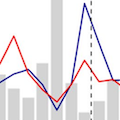Abstract
Background: Long-term care facilities (LTCFs) are vulnerable to disease outbreaks. Here, we jointly analyze SARS-CoV-2 genomic and paired epidemiologic data from LTCFs and surrounding communities in Washington state (WA) to assess transmission patterns during 2020–2022, in a setting of changing policy. We describe sequencing efforts and genomic epidemiologic findings across LTCFs and perform in-depth analysis in a single county.
Methods: We assessed genomic data representativeness, built phylogenetic trees, and conducted discrete trait analysis to estimate introduction sizes over time, and explored selected outbreaks to further characterize transmission events.
Results: We found that transmission dynamics among cases associated with LTCFs in WA changed over the course of the COVID-19 pandemic, with variable introduction rates into LTCFs, but decreasing amplification within LTCFs. SARS-CoV-2 lineages circulating in LTCFs were similar to those circulating in communities at the same time. Transmission between staff and residents was bi-directional.
Conclusions: Understanding transmission dynamics within and between LTCFs using genomic epidemiology on a broad scale can assist in targeting policies and prevention efforts. Tracking facility-level outbreaks can help differentiate intra-facility outbreaks from high community transmission with repeated introduction events. Based on our study findings, methods for routine tree building and overlay of epidemiologic data for hypothesis generation by public health practitioners are recommended. Discrete trait analysis added valuable insight and can be considered when representative sequencing is performed. Cluster detection tools, especially those that rely on distance thresholds, may be of more limited use given current data capture and timeliness. Importantly, we noted a decrease in data capture from LTCFs over time. Depending on goals for use of genomic data, sentinel surveillance should be increased or targeted surveillance implemented to ensure available data for analysis.
